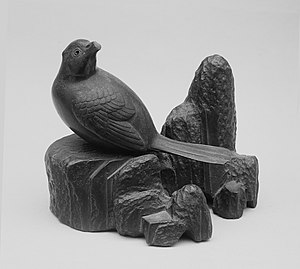Côtois Reparations and Cultural Repatriation Act of 1966

Côtois Reparations and Cultural Repatriation Act of 1966 is a law passed by the People's Federal Royal Parliament of the Federation of the Southern Coast Lapérouse in 1966 and signed by Audun Strande. There has been several previous smaller bills to return cultural property and pay reparations to various nations and cultures to nations affected by Queendom of Lapérouse, however the CR&CR Act was the largest ongoing operation by the Federation. It was primary driven by FPM Strande during the Concordian Cold War, in an effort to better coordinate the return of cultural property and give reparations to nations rather than the previous attempts which focus more on a one-on-one previous laws tried. The law was almost completely successful in terms of returning cultural artifacts to the native homelands however reparations is still on-going due to diplomatic disputes and concerns of Côtoise influence. Repatriations are paid by building of infrastructure, such as power plants, roads and schools rather giving out cash payments. FPM Strande argument for payment through building of infrastructure over a cash payment was to avoid dependency on foreign aid, the quickness of the payment being given and being more direct, physical form of payment rather than something more abstract than paying in Red Krone. Detractors of the law push that in several cases that a cash payment is superior from of reparations, and quite a few of the cultural artifacts being returned is as important to the Côtoise culture as much as it is to the native culture. The Old Guard faction of the Royal Workers' Party, completely disagreed with paying reparations but was in favor of cultural repatriation the reasoning being that the Federation of the Southern Coast Lapérouse is not the successor to the Queendom of Lapérouse.
Cultural Repatriations
Cultural reparations began in 1969, three years after the law was signed due to the level of cultural artifacts being returned to level of international bureaucracy and diplomacy effort it required. Artifacts being returned was all outside of the country, as cultural artifacts native to the Federation's cultures was previously returned in 1921, 1930 and 1940. As such, countries such as Hvaloaszna, Nystatiszna, Helslandr, Gusanaszna, Ymirland and dozens other nations. One of signification repatriations being to Kaldrbuth, returning several Hjørdist religious artifacts which marked a turning point of relations between the two countries. There was heavy discussion of returning Atlalandian artifacts due to the outbreak of the Violet Restoration War in 1966, and not ending until 1969. Due to the war and the country being divided between West Atlalandr and East Atlalandr, who to return the artifacts too and reparations became heated diplomatic discussion between the Atlalandr states. Norgsveldet, pushing for the Federation to return the artifacts to West Atlalandr. In the end, the Federation elected to hold a joint discussion in 1973 between the two states to divide up the cultural artifacts between themselves and sort out repatriation payment.
Reparation Payments
Reparation payments has been a topic of debate between recipients cultures and nations. Even more so for minority cultures within countries, as the government of the Federation requested the government of the country to directly ask the leaders of the minority group of what to build in their communities. Example being in 1977, the Social Republic of Nystatiszna initially was accepting of aid, however later refused when the Federation requested to meet with Ny'Akøy, Ny'Akøhav and Nyrak (cultural/ethnic groups in Nystatiszna) community leaders in order to understand infrastructure requests. The Imperial Party of Nystatiszna bluntly refused any access to Nystatiszna, however stated they could build in Fantøm or Newport to which the Federation disagreed and the issue wasn't solved until Ingrid the Reclaimer was enshrined as Fyllikenkrasjlander and became the Matriarch which opened the country up. Allowing Federation to pay its reparations duties.